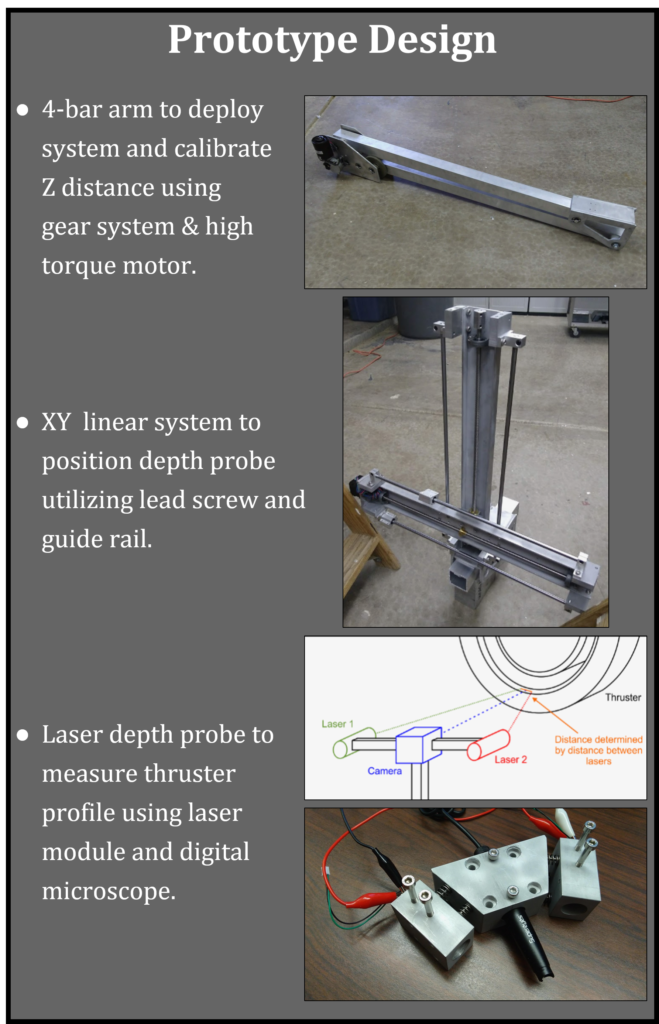In-Situ Probe Positioning System
Institution
Arizona State University (Polytechnic Campus)
Class
Iron Class (2018 – 2019)
Student Team
Cole Brauer, Robotics
Edgar Diaz, Mechanical Engineering Systems
Connor Giam, Robotics
Quinn Seavey, Robotics
Michael Turcu, Electrical Systems Engineering
Scientific & Technical Guidance
Dr. Jason Frieman, NASA Glenn Research Center
Academic Guidance
Dr. Timothy Beatty, Associate Director, ASU Polytechnic School Engineering Program
Dr. Darryl Morrell, Associate Professor, ASU Polytechnic School Engineering Program
Project Description
The Psyche spacecraft will utilize an electric propulsion system composed of a set of Hall effect thrusters (HETs) in order to enable the spacecraft to reach the asteroid and maintain each of its science orbits. On the ground, HETs are testing in large vacuum facilities in order to simulate space conditions. However, since these facilities are in-vacuum, the thruster is not easily accessible for inspection during the test. As such, a system capable of positioning cameras and other diagnostics in-situ is desirable to enable test operators to perform remote inspections of the test hardware. This project was to design a system capable of remotely positioning probes inside vacuum test facilities. The team built and tested a full-scale prototype.


